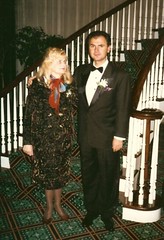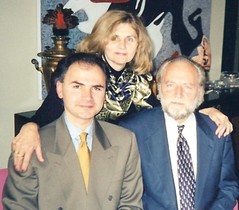Blog Archives
Salvador Dali
Via Flickr: Salvador Dali, Spanish, 1904-1989
Dorothy Spreckles Munn, 1942. Oil on Canvas. Signed and dated lower right: Gala Salvador Dali/1942. Gift of Mrs. Charles A. Munn to the Fine Arts Museums of San Francisco, 1989.
Dorothy Spreckels Munn (1913-2000) was the younger daughter of Alma and Adolph Spreckels, founder of the California Palace of the Legion of Honor. A prominent San Franciscan and a generous patron of the arts, she lived in Paris for many years, finally moving to Palm Beach, Florida with her husband, Charles Munn.
Dado – Le diptyque d’Herouval (right panel)
Via Flickr: Djuric Miodrag (1933-2010), called Dado, Le diptyque d’Herouval (right panel), ca. 1975-1976
Rubens (detail) Le Louvre
Via Flickr: Peter Paul Rubens (June 28, 1577 – May 30, 1640) was a prolific seventeenth-century Flemish Baroque painter, and a proponent of an exuberant Baroque style that emphasized movement, color, and sensuality. He is well-known for his Counter-Reformation altarpieces, portraits, landscapes, and history paintings of mythological and allegorical subjects.
Martin De Vos
Via Flickr: Detail.
The Museum of Fine Arts of Seville or Museo de Bellas Artes de Sevilla is a museum in Seville, Spain, a collection of mainly Spanish visual arts from medieval period to the early 20th century, including a choice selection of works from the so-called Golden Age of Sevillian painting during the 17th century, such as Murillo, Zurbarán, Francisco de Herrera the younger, and Valdés Leal. The museum was founded in 1839, after the desamortizacion or shuttering of religious monasteries and convents, collecting works from across the city and region. Originally, the site held the convent of the Order of the Merced Calzada de la Asunción, founded by St. Peter Nolasco during the reign of King Ferdinand III of Castile. Extensive remodeling, in the early 17th century, was led by the architect Juan de Oviedo y de la Bandera.
Roman Cordoba
Via Flickr: The Museum of Archaeology (Museo Arqueológico) features treasures from Cordoba’s rich cultural heritage, including prehistoric crafts, Roman statues and mosaics, as well as artifacts of Roman, Iberian, and Visigothic origin.The museum’s upper floor is devoted to Moorish culture and history. One of the most impressive exhibits is a bronze deer statue which was found during excavation of the former palace city of Medina Azahara.A must-see are the remains of a Roman theater which are integrated in the Renaissance museum building.












